Transpiration and Colored Flowers
Have you noticed a theme on Inspiration Laboratories this week? It’s been all about water science. I’ve teamed up with Mom to 2 Posh Lil Divas, Coffee Cups and Crayons, and Learn Play Imagine to bring you a science week full of great ideas. Monday, we looked at weather, Wednesday was all about liquids, and today we’re exploring flowers. We’re observing transpiration by attempting to color flowers.
Transpiration
Transpiration is a process in plants where the water moves up through the stems, leaves, and flowers. Water evaporates through small openings in the plant. When water molecules leave the plant through evaporation, they pull up other water molecules to take their place. The process continues down through the stem of the plant eventually drawing in more water from the soil or surrounding envrionment. The rate of transpiration {how fast it happens} depends on the conditions in the environment. Things that speed up evaporation will speed up transpiration as well – lower humidity, sunlight, wind, etc.
Using Transpiration to Color Flowers
You can use colored water to show the process of transpiration at work. The color will be transported up the plant along with the water.
Materials:
- Glasses/containers
- White flowers
- Food coloring
Add water and food coloring to your containers. Then, place the cut flowers in the colored water.
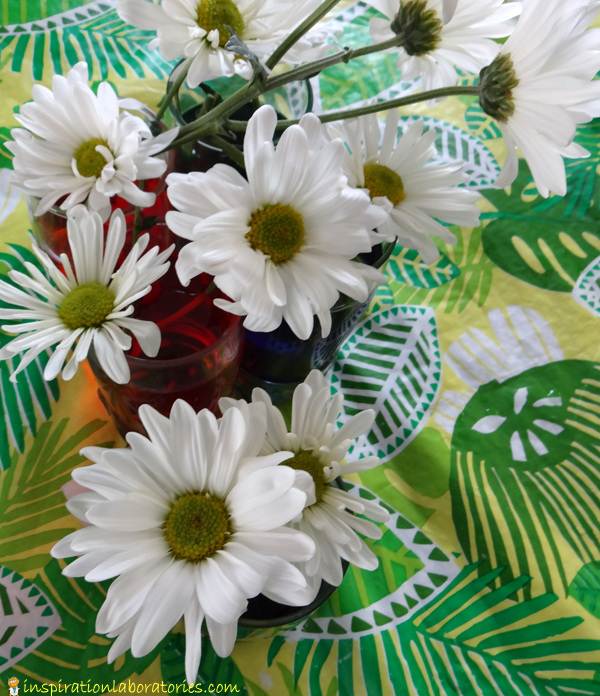
A day or two later, you should have colored flowers. After 30+ hours, we saw some color change but not a lot. {I will edit this post with new pictures once our flowers are more colored.}
Not only did we try to color the flowers one color, but we also attempted to color a single flower with two colors. I cut the stem down the middle. Then, I placed half of the stem in one color of water and half of the stem in another color. We tried red and blue as well as green and orange.
You can begin to see the results here. The flower is two colors – blue on one side and red on the other.
Then, we cut a large stem into fourths and placed it into four different colors. The stem had three flowers on the top. We were interested to see where the colors would end up.
Only the top flower has shown color so far. A bit of yellow underneath.
I showed Aiden the little bits of color on the flowers. I asked him how the flowers changed colors. He said they sucked up the colored water. I talked to him about how transpiration worked. I know he might not remember the process this time, but eventually he will. {I know you’ve heard me say this before.} It’s all about building a foundation for future learning – introducing concepts and experiences that he can draw from later when he’s learning the processes in more depth.
If you’d like to see what your flowers might look like after a while longer, explore how plants drink with Rainy Day Mum.
More Flowers Science for Kids
Bern from Mom to 2 Posh Lil Divas gathered 10 flower experiments and explorations.
Allison from Learn Play Imagine shares how to make homemade watercolors from fresh flowers.
Megan from Coffee Cups and Crayons conducted a flower pigment experiment.
Don’t forget to checkout our science ideas for weather and liquids, too!
You can follow Inspiration Laboratories on Pinterest. I pin the latest post and lots of other great ideas. Subscribe to posts by e-mail so you don’t miss a thing.
Linking up here.

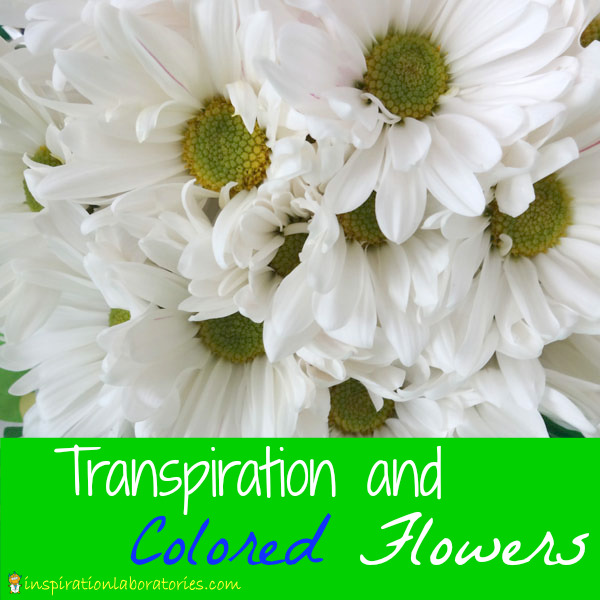
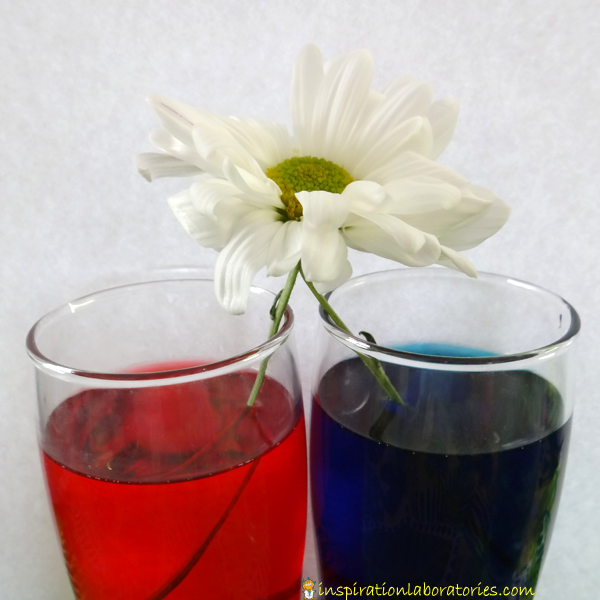
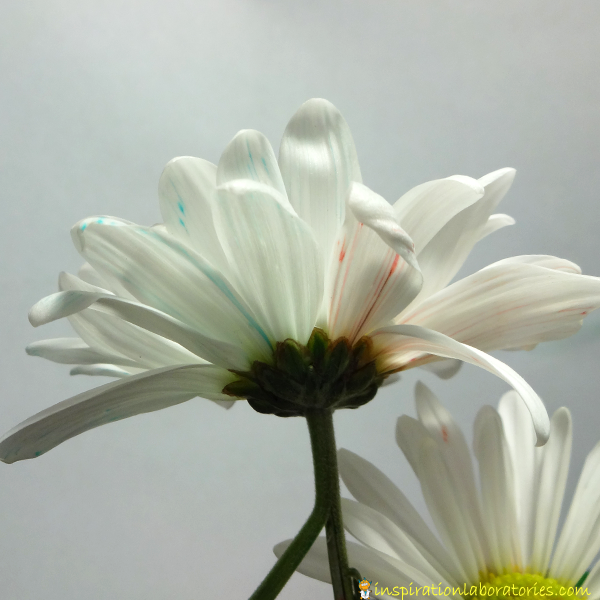
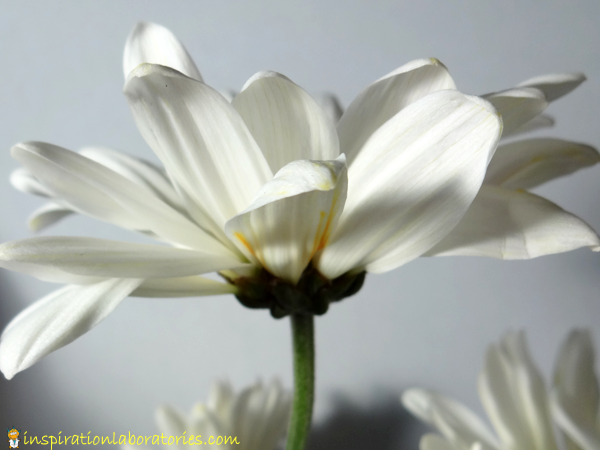
Leave a Reply